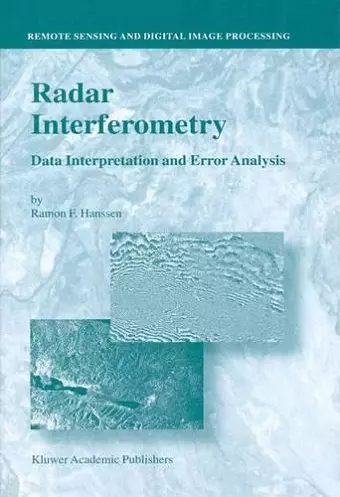Radar Interferometry
Data Interpretation and Error Analysis
Format:Hardback
Publisher:Springer
Published:30th Apr '01
Currently unavailable, our supplier has not provided us a restock date

This book is the product of five and a half years of research dedicated to the und- standing of radar interferometry, a relatively new space-geodetic technique for m- suring the earth’s topography and its deformation. The main reason for undertaking this work, early 1995, was the fact that this technique proved to be extremely useful for wide-scale, fine-resolution deformation measurements. Especially the interf- ometric products from the ERS-1 satellite provided beautiful first results—several interferometric images appeared as highlights on the cover of journals such as Nature and Science. Accuracies of a few millimeters in the radar line of sight were claimed in semi-continuous image data acquired globally, irrespective of cloud cover or solar illumination. Unfortunately, because of the relative lack of supportive observations at these resolutions and accuracies, validation of the precision and reliability of the results remained an issue of concern. From a geodetic point of view, several survey techniques are commonly available to measure a specific geophysical phenomenon. To make an optimal choice between these techniques it is important to have a uniform and quantitative approach for describing the errors and how these errors propagate to the estimated parameters. In this context, the research described in this book was initiated. It describes issues involved with different types of errors, induced by the sensor, the data processing, satellite positioning accuracy, atmospheric propagation, and scattering character- tics. Nevertheless, as the first item in the subtitle “Data Interpretation and Error Analysis” suggests, data interpretation is not always straightforward.
From the reviews:
“As satellite coverage improves, radar interferometric techniques are becoming powerful and accessible tools for geodetic studies. … and are also applicable to the study of atmospheric conditions. … a guidebook for people who are already familiar with the method. … In conclusion, this is a well written, well presented book … . This book should be quite useful as a guide for applying InSAR techniques and evaluating the possible errors and the confidence to be placed on the results.” (F. A. Nava, Pure and Applied Geophysics, Vol. 168, 2ISBN: 9780792369455
Dimensions: unknown
Weight: unknown
308 pages